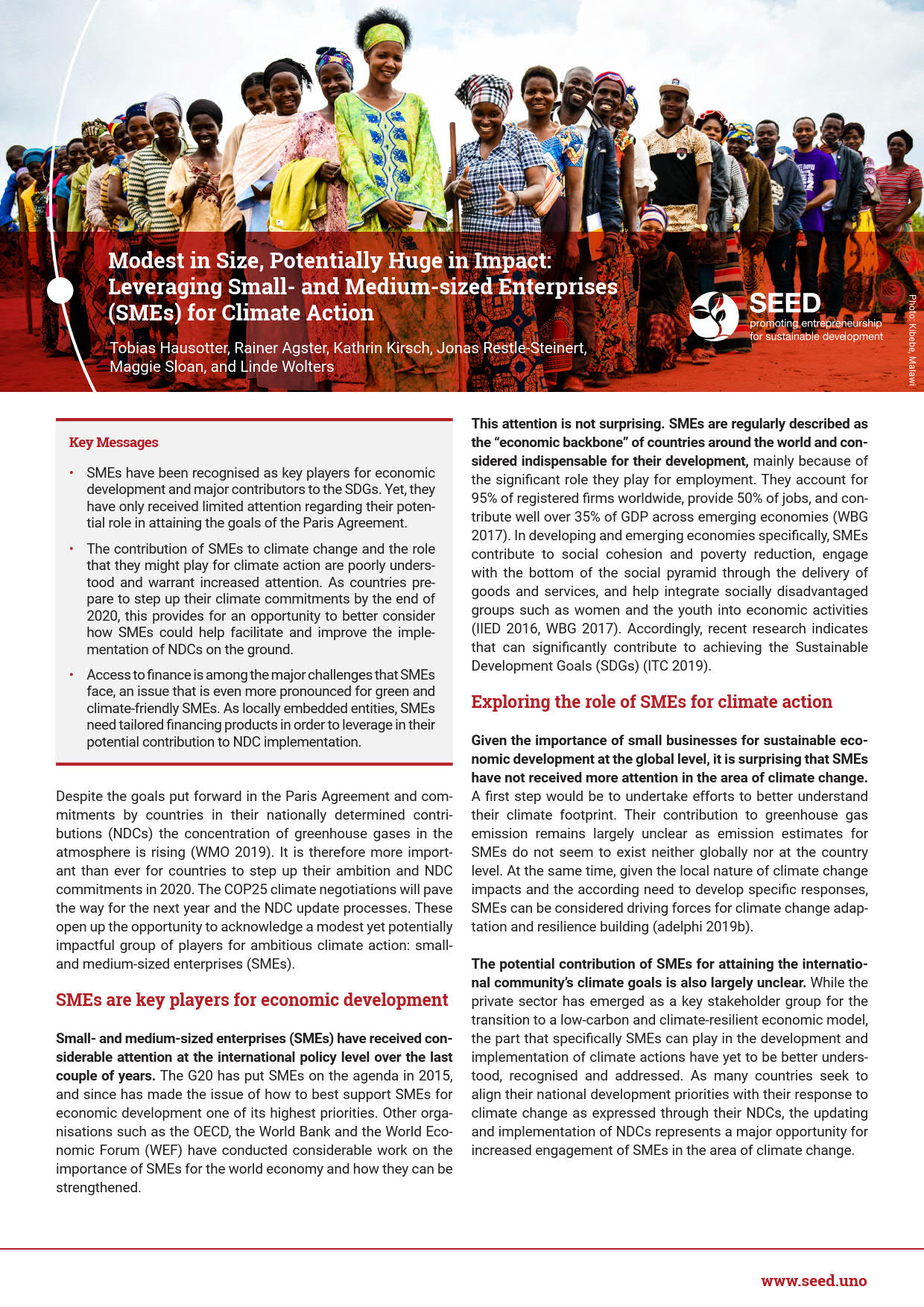Modest in Size, Potentially Huge in Impact: Leveraging Small- and Medium-sized Enterprises (SMEs) for Climate Action

Despite the goals put forward in the Paris Agreement and commitments by countries in their nationally determined contributions (NDCs) the concentration of greenhouse gases in the atmosphere is rising (WMO 2019). It is, therefore, more important than ever for countries to step up their ambition and NDC commitments in 2020. The COP25 climate negotiations will pave the way for the next year and the NDC update processes. These open up the opportunity to acknowledge a modest yet potentially impactful group of players for ambitious climate action: small- and medium-sized enterprises (SMEs).
In light of the key role that SMEs play in economic development and climate action, this brief was launched during COP25 in Madrid and offers insights to into the future of entrepreneurship promotion and SME development for climate action. The brief emphasises:
The potential for a positive contribution of SMEs to sustainable development is significant and has been widely recognised. At the same time, the role they might play in low-carbon and climate-resilient development has so far received limited attention and is not well understood. As the concept of a just transition is emerging as a framework that can simultaneously address climate change and achieve sustainable development (IOE 2019), the role that SMEs might play in linking these two areas deserves further attention. The potential for a positive contribution of SMEs to sustainable development is significant and has been widely recognised. At the same time, the role they might play in low-carbon and climate-resilient development has so far received limited attention and is not well understood. As the concept of a just transition is emerging as a framework that can simultaneously address climate change and achieve sustainable development (IOE 2019), the role that SMEs might play in linking these two areas deserves further attention.
Many countries intend to enhance their NDC ambition or actions by the end of 2020. This provides for an opportunity to more closely involve the private sector – and thereby the SME sector – in the elaboration of targets and identification of measures while better specifying their role and commitments (GRI and CDP 2019).
At the same time, efforts should continue at international climate funds and financial institutions to explore better ways and mechanisms to channel climate finance to SMEs. As they operate at the local level where climate change is felt most and where emission reductions have to materialise, they hold considerable potential for impactful investments. More widespread adoption of bottom-up approaches to the development of SME financing instruments may help in leveraging the potential contributions of SMEs to NDC implementation.
